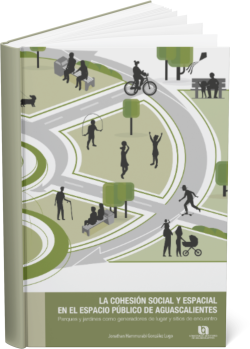THE SOCIAL AND SPATIAL COHESION IN THE PUBLIC SPACE OF AGUASCALIENTES: Parks and gardens as place generators and meeting places.
Synopsis
This work explains the relationship between the physical-spatial morphological configuration and the socio-cultural phenomena that are generated from the practices inside public spaces by the users, and the elements that distinguish the population, with which it identifies itself, for its constitution as a “place” that promotes social cohesion, integrating and defining belonging, rootedness and fundamental part of the urban structure of the city.
In order to clarify the facts, an analysis of parks and gardens in the city of Aguascalientes -emerging in the second half of the twentieth century, in medium-sized subdivisions- is made, based on the documentary analysis of the plans that describe the morphology of the selected units of analysis; the application, analysis and interpretation of questionnaires applied in the field, interviews and, finally, graphic representations of public space.
The results allow us to establish and verify the relationships between the physical characteristics of parks and gardens, the uses, practices and interactions of the population within them.

Downloads
Published
Series
Categories
License

This work is licensed under a Creative Commons Attribution-ShareAlike 4.0 International License.













